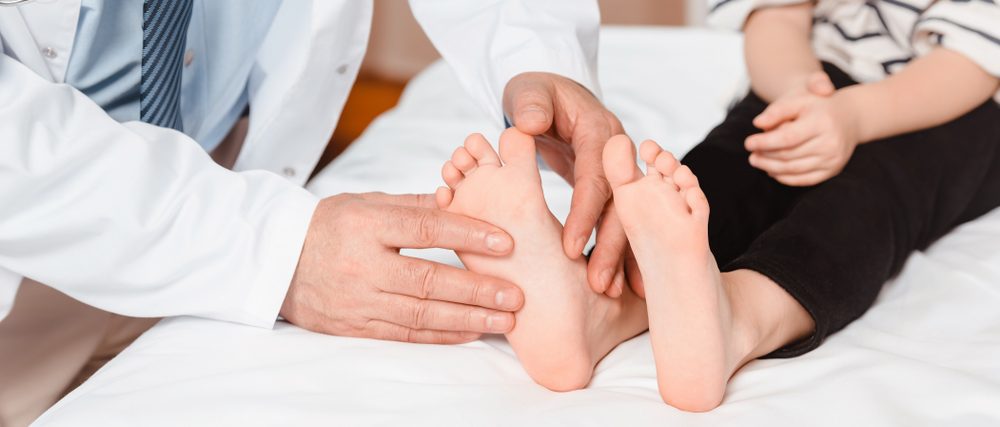While they are relatively rare, foot abnormalities can prove to be quite distressing to a newborn’s parents.
Fortunately, the majority of those abnormalities are not due to disease.
Despite its unusual and perhaps alarming appearance, an abnormal infant foot is actually very treatable if the issue is quickly addressed.
Here are the most common foot abnormalities in babies.
Clubfoot
Found in 1 to 2 out of every 1,000 infants, the clubfoot is a congenital defect affecting the structures of the foot.
The clubfoot is characterized by the infant’s ankles and feet being crooked or pointing inward.
Clubfoot can be divided into two categories:
- Positional clubfoot, resulting from poor alignment of the fetal foot in the womb;
- The true clubfoot, which is naturally deformed and whose musculoskeletal structures are poorly developed.
To diagnose clubfoot, a doctor will typically base themselves on the following symptoms:
- A smaller calf and foot;
- Toes that point downward;
- The front of the foot pointing inward;
- The foot is stiff.
After the diagnosis has been made, the treatment consists of 3 phases:
- Casting: this phase of treatment is preferably done within the first weeks of the infant’s life;
- Achilles tendon tenotomy: this procedure straightens both the heel and the tendon;
- Wearing a brace: the brace consists of boots, connected with a metal bar, which prevents the feet from returning to their original shape and should be worn until the baby takes its first steps.
Metatarsus adductus (varus)
Metatarsus adductus, which is quite common in newborns, is characterized by an inward deviation of the forefoot.
This foot deformity is caused by the baby’s unusual position in the womb, much like the positional clubfoot.
While it can sometimes be corrected through simple manipulation, this condition is also one that is likely to worsen with time.
Treatment for an unruly metatarsus adductus should take place during the first few months of an infant’s life and includes:
- Corrective splintage;
- A targeted stretching program;
- Physiotherapy;
- Plaster cast on the foot.
Flatfoot
A flat foot, or fallen arches, is the standard foot condition among young infants.
In fact, 97% of babies are born with flat feet.
Most of the time, the sole of the foot will widen naturally as they grow.
However, in some cases, a structural or functional defect prevents the normal development of the foot’s arch.
Therefore, when the child starts learning to walk, a flat foot left unattended will likely impede their progress.
You should thus be cautious of the following problems:
- The infant’s shoes are abnormally worn;
- Their foot is stiff;
- They have an abnormal difficulty walking;
- They tiptoe;
- They regularly complain of pain in ankles or knees;
- They get tired more quickly.
Overlapping toes
Unlike adult hammertoes, overlapping toes in newborns can be adjusted.
In fact, toes that overlap at birth usually move back into place as the infant learns to walk.
The podiatrist and the health of your baby’s feet
Many foot deformities in newborns can be corrected if they are attended to without delay.
A podiatrist is a medical professional with the expertise to treat foot pain in a variety of people, including infants.
If you are concerned for your baby’s feet, don’t hesitate to contact a PiedReseau clinic.

